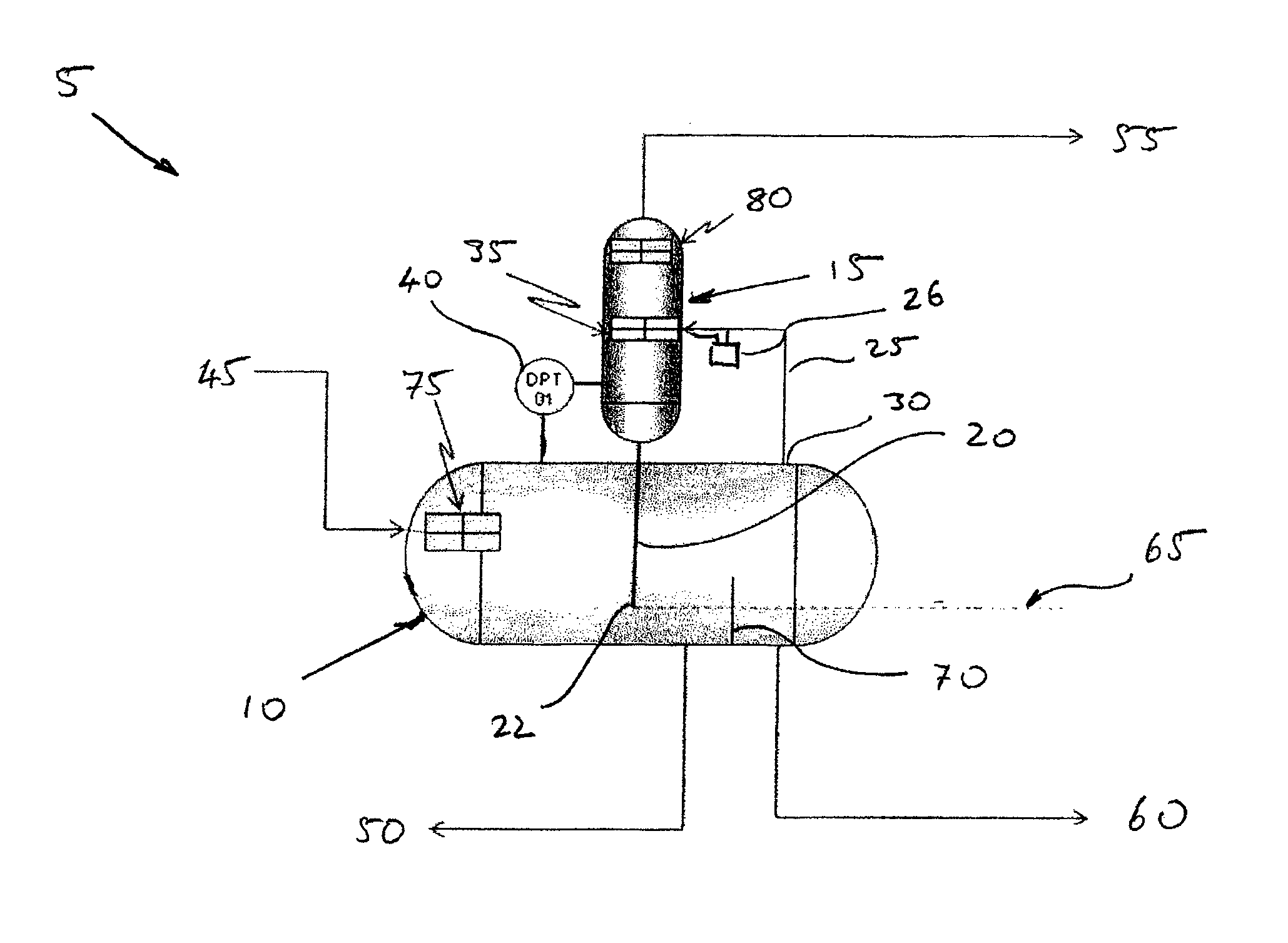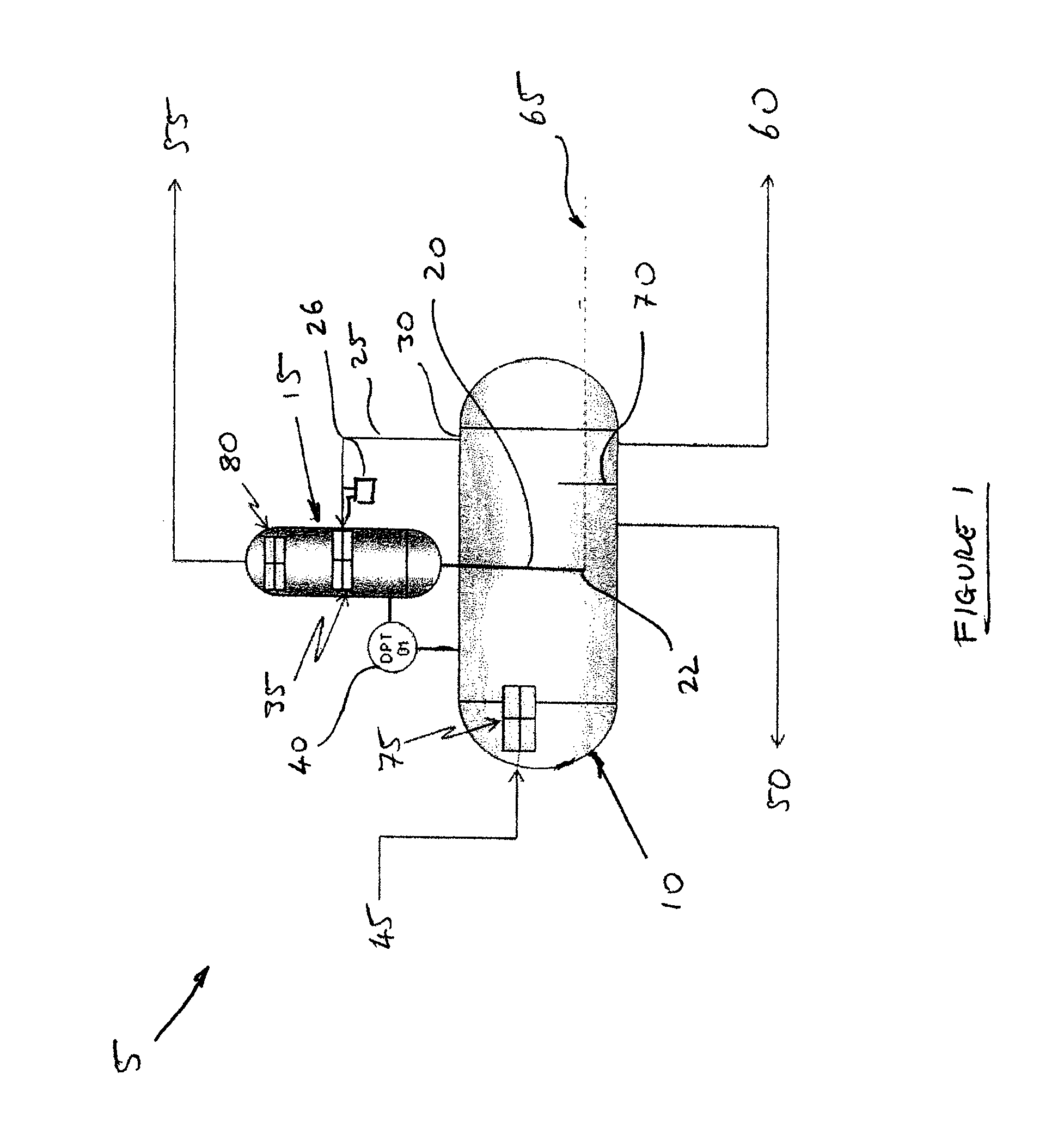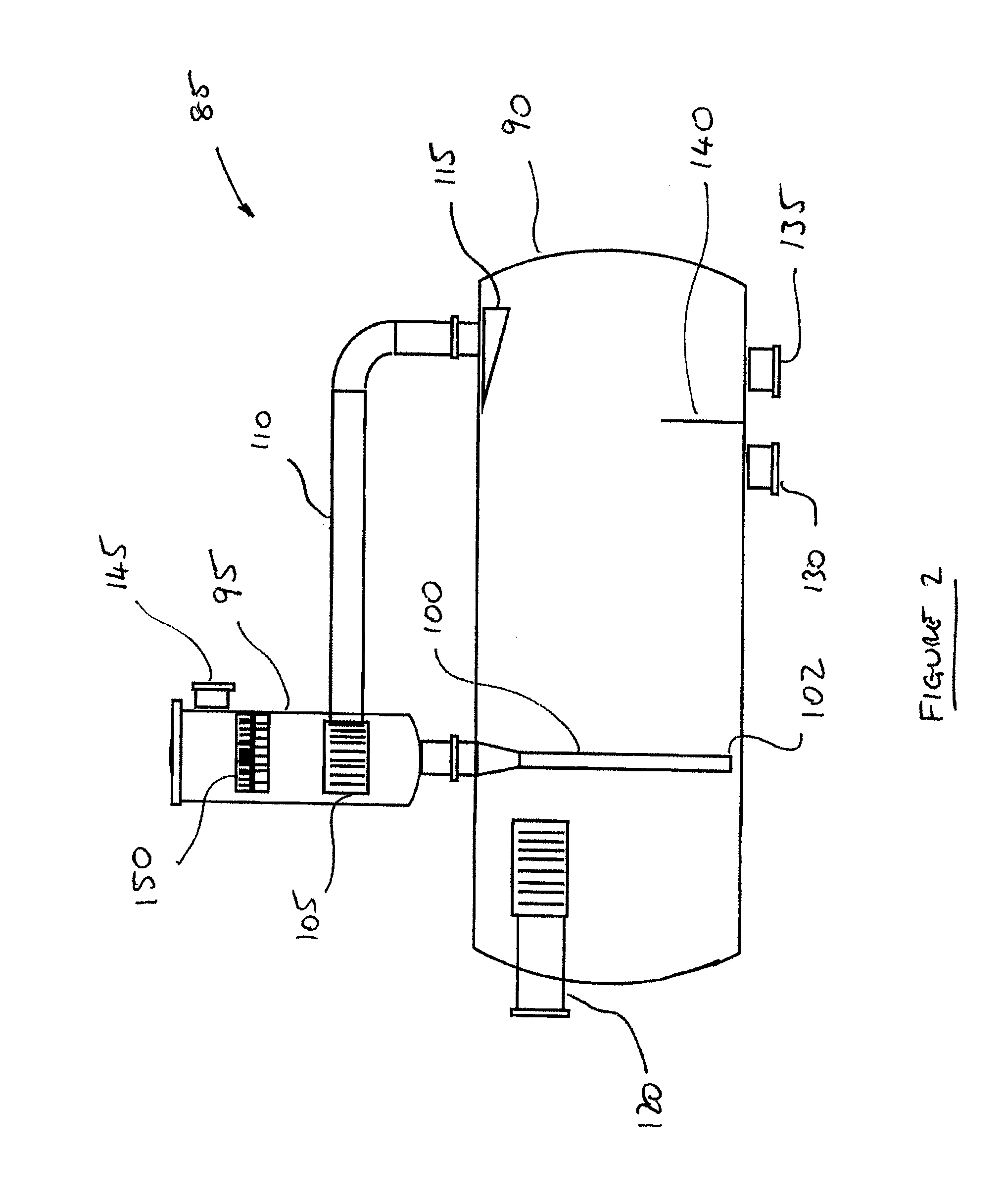Separator and method for separation
a separation device and separation method technology, applied in the direction of separation devices, using liquid separation agents, sedimentation settling tanks, etc., can solve the problems of downstream facilities, problems such as damage, and increase the cost of separation, and the effect of increasing space, weight and instrumentation
- Summary
- Abstract
- Description
- Claims
- Application Information
AI Technical Summary
Benefits of technology
Problems solved by technology
Method used
Image
Examples
Embodiment Construction
[0037]The invention provides a separator developed for the oil and gas industry where a two phase (gas and liquid) or 3 phase (gas, oil and water) separator which, in various embodiments, may have the advantages of providing high liquid droplet removal efficiency, may be compact with minimal space and weight and may require less controls and instrumentations. The system may be suitable for both onshore and offshore applications where space is limited and may be suitable for waxy and fouling fluid services and for facilities where motion effects are high, e.g. FPSOs.
[0038]FIG. 1 gives the schematic of the separator vessel 5 of this invention to enable bulk gas / liquid separation and efficient gas polishing. The separation system 5 comprises two sections, the bulk gas liquid separation section 10 and a gas polishing scrubber section 15 as an integrated unit 5.
[0039]The separator chamber 10 is similar to a three phase gas-liquid separator whereby production fluid 45 comprising a gas and...
PUM
| Property | Measurement | Unit |
|---|---|---|
| Length | aaaaa | aaaaa |
| Pressure | aaaaa | aaaaa |
| Flow rate | aaaaa | aaaaa |
Abstract
Description
Claims
Application Information
 Login to View More
Login to View More - R&D
- Intellectual Property
- Life Sciences
- Materials
- Tech Scout
- Unparalleled Data Quality
- Higher Quality Content
- 60% Fewer Hallucinations
Browse by: Latest US Patents, China's latest patents, Technical Efficacy Thesaurus, Application Domain, Technology Topic, Popular Technical Reports.
© 2025 PatSnap. All rights reserved.Legal|Privacy policy|Modern Slavery Act Transparency Statement|Sitemap|About US| Contact US: help@patsnap.com



